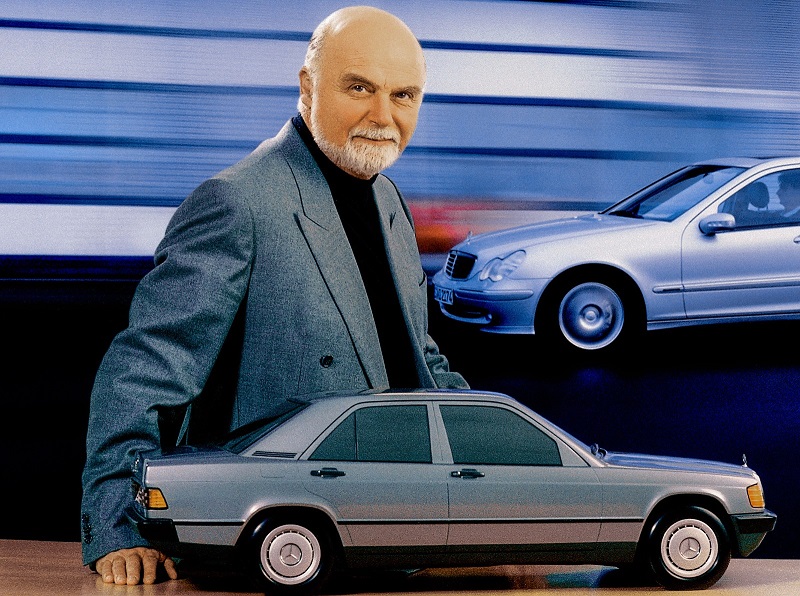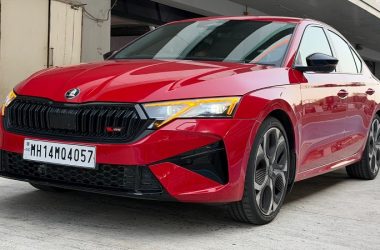Sindelfingen, Germany – The automotive world bids farewell to one of its most iconic figures, Bruno Sacco, who passed away on September 19, 2024, at the age of 90. Renowned for his profound influence on Mercedes-Benz design, Sacco leaves behind a legacy that transformed the face of luxury vehicles for generations.

Born in Udine, Italy, Sacco’s career with Mercedes-Benz spanned over four decades, beginning in 1958 and culminating in his retirement as Chief Designer in 1999. His work is immortalized in some of the most revered models in automotive history, from the sleek lines of the S-Class (model series 126) to the iconic SL (R 129) and the compact 190 (W 201). Sacco’s design philosophy—anchored in the belief that a Mercedes-Benz should always retain its distinct identity—shaped the brand’s aesthetic for decades.
Gorden Wagener, the current Chief Design Officer at Mercedes-Benz, lauded Sacco’s enduring influence: “Bruno Sacco left a lasting mark on the company with his iconic designs and his passion for aesthetics. His work continues to inspire, and our thoughts are with his family.”
Sacco was a designer whose work spoke of more than just cars. He elevated automotive design to an art form, combining sleek elegance with aerodynamics and functionality. Under his leadership, Mercedes-Benz moved beyond simple engineering, creating vehicles that not only performed at the highest levels but also stood as symbols of luxury and precision. The E-Class (series 124), S-Class (series 126), and SL models he oversaw continue to be celebrated as timeless classics, admired by both enthusiasts and casual drivers.
Sacco’s career began in the mid-1950s at Carrozzeria Ghia, where he honed his skills in model production. In 1958, he joined Mercedes-Benz at their Sindelfingen plant, marking the start of an extraordinary journey that saw him rise to the top of the design world. His first significant achievement was overseeing the creation of the brand’s first station wagon in the 1977 model series 123, setting the stage for a career defined by innovation.
Sacco’s most cherished project was the S-Class of the 126 series. Speaking about it later in life, he reflected, “The 126 model series in all design forms is the best thing I have done for Mercedes-Benz.” He was particularly proud of the car’s proportions and the iconic protective side strips—a detail that would later become a defining feature of Mercedes-Benz designs across multiple series.
Throughout his career, Sacco remained committed to a consistent design language that allowed each new generation of Mercedes-Benz vehicles to evolve without losing the essence of the brand. He believed that the family identity of Mercedes models should be unmistakable, ensuring that even as newer models were introduced, older ones would not seem obsolete.
During his tenure, Sacco also pushed Mercedes-Benz to explore new markets, overseeing designs that appealed to a younger demographic. His leadership during the company’s product expansion in the 1990s—introducing models like the A-Class, M-Class, SLK, and CLK—helped broaden the appeal of the brand without compromising its commitment to elegance and quality.
After retiring in 1999, Sacco continued to be celebrated for his contributions to automotive design. He was inducted into both the “Automotive Hall of Fame” in the United States and the “European Automotive Hall of Fame.” In 2002, his alma mater, the University of Udine, awarded him an honorary doctorate in recognition of his life’s work.
Sacco’s vision went beyond just vehicles—he was instrumental in the design of the Mercedes-Benz Design Center in Sindelfingen, working alongside renowned architect Renzo Piano to create a space where creativity and engineering would converge.
As the automotive industry evolves, the imprint left by Bruno Sacco remains indelible. His timeless designs, which balance aesthetics, functionality, and innovation, continue to shape the way we experience luxury on the road. Mercedes-Benz, and indeed the world, will forever remember the man who made “a Mercedes look like a Mercedes.”
Sacco is survived by his family, who, along with countless admirers, will remember him as a visionary who turned steel and chrome into works of art.







